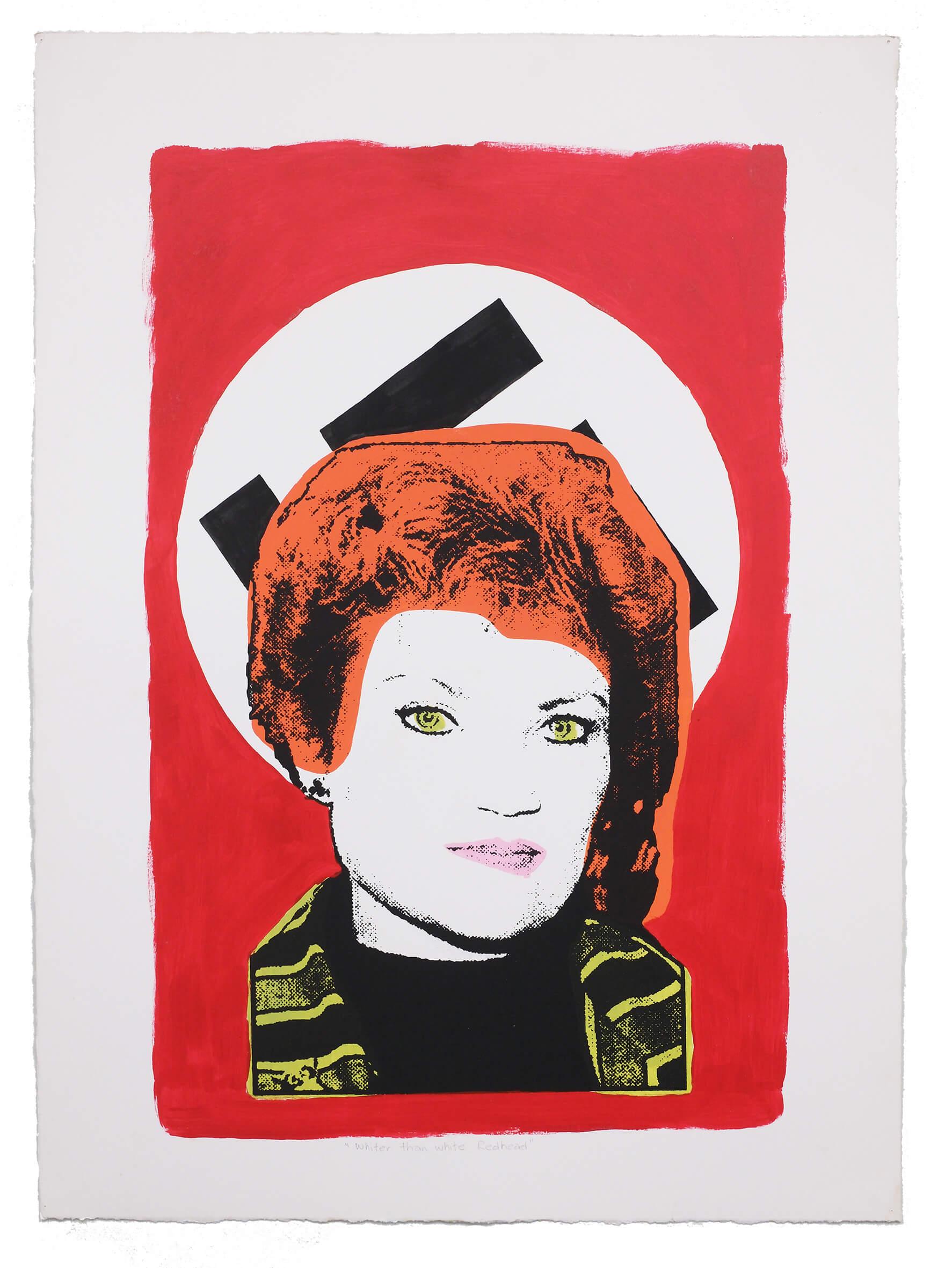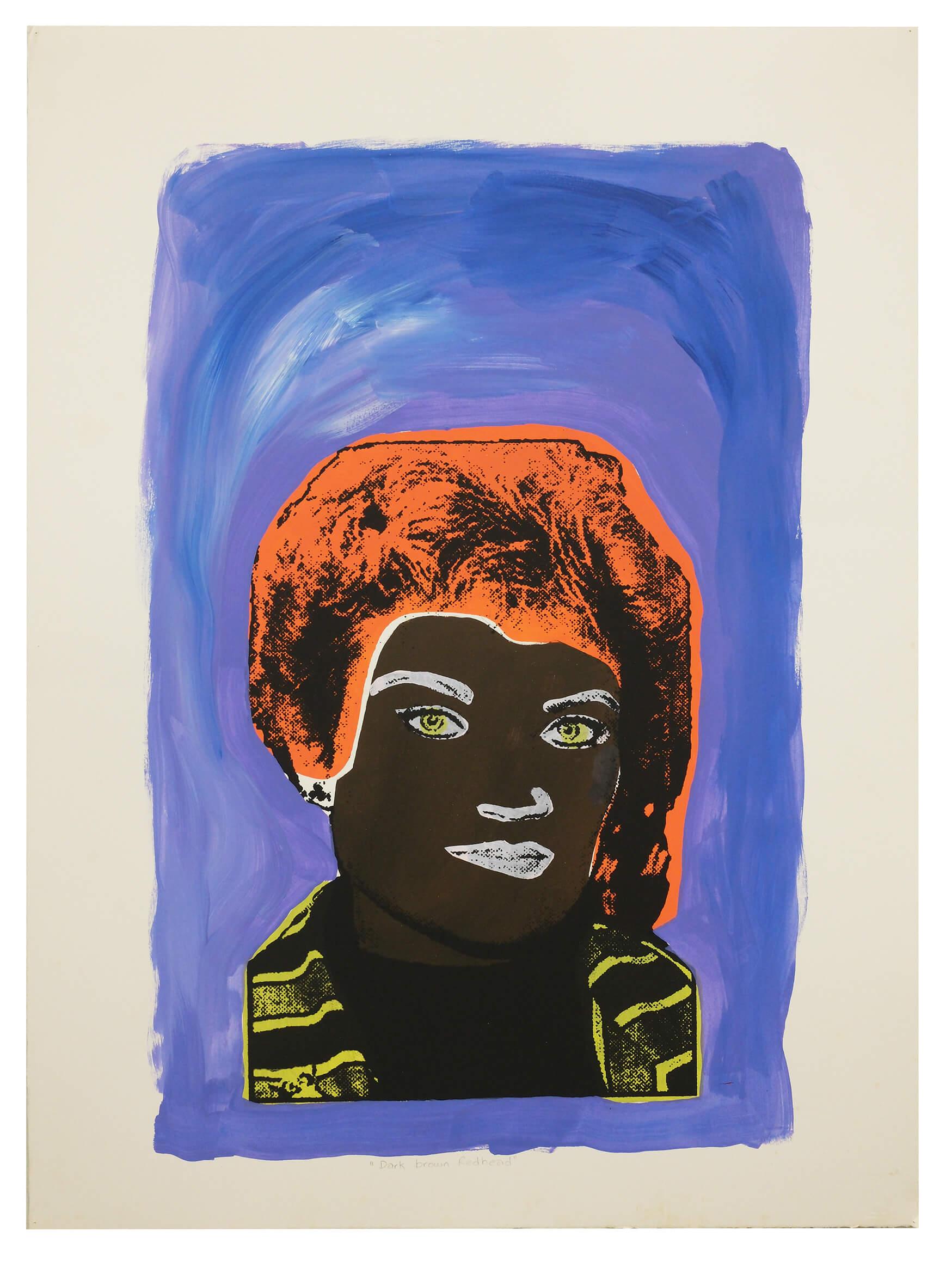
Artworks on the theme of racism and ‘black/white’ relations in the Top End feature prominently in a recent donation of 38 works on paper to the Batchelor Institute Art Collection. The works were donated by the critically acclaimed Darwin artist Therese Ritchie and include works by herself as well as by fellow Darwin-based artists Chips Mackinolty and Franck Gohier.

Mackinolty and Gohier are not new to the Collection. Two prints of Mackinolty’s We are still strong! (1987) screenprint exist in the Collection while Gohier is the printmaker-collaborator for a Collection lithograph by Shirley Purdie, Giwiwan—Bow River Country (1996). The new donation of Mackinolty’s work is a digital print poster-style work with a statement by Jawoyn people about Nitmiluk National Park. “Nitmiluk is not a wilderness”, it reads. “It is not pristine or untamed; it is a human artefact.” 14 works by Gohier have been donated including a series of Pauline Hanson prints which he produced around 1996 when Hanson and her One Nation Party first came to national attention. Gohier’s series is in direct satirical response to the racist rhetoric of so-called Hansonism. It presents a number of colour variations of a screenprinted image of Hanson’s face-bust with matching titles such as Dark Brown Redhead, Black Redhead, Red Redhead and Spotty Redhead. In one version, Whiter than white Redhead, Hanson’s head obscures a swastika.
While the Collection focuses on Indigenous Australian art it also takes in work by non-Indigenous artists where, as with Gohier and Mackinolty, the works’ content is of relevance to Indigenous Australia. Such is the case also for much of Ritchie’s work which does not shy away from the cultural tensions characterising Top End/Territory life. 23 prints from her provocatively titled blacks in the back, cunts in the front series (2016) have been donated to the Collection. The series and its title, according to Ritchie, “is emblematic of how non-Indigenous Australia embraces and yet looks away from Aboriginal people”. Ritchie writes about the vernacular currency of the title and the problems she faced in exhibiting this series (https://thereseritchie.com/blacks-in-the-back-2016). Along with Gohier’s Pauline Hanson series, it significantly adds to Collection works addressing issues of racism and social justice as exemplified by the recent donation (in 2024) of ephemera from the National Office of the Campaign Against Racial Exploitation (CARE) along with related material from the Gale family in Adelaide who were actively involved in CARE.



